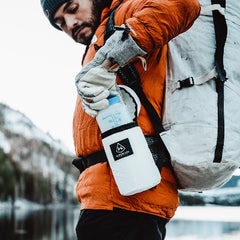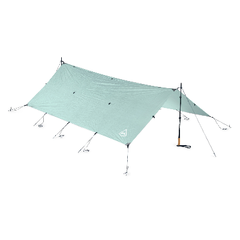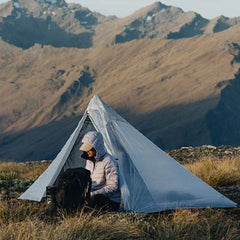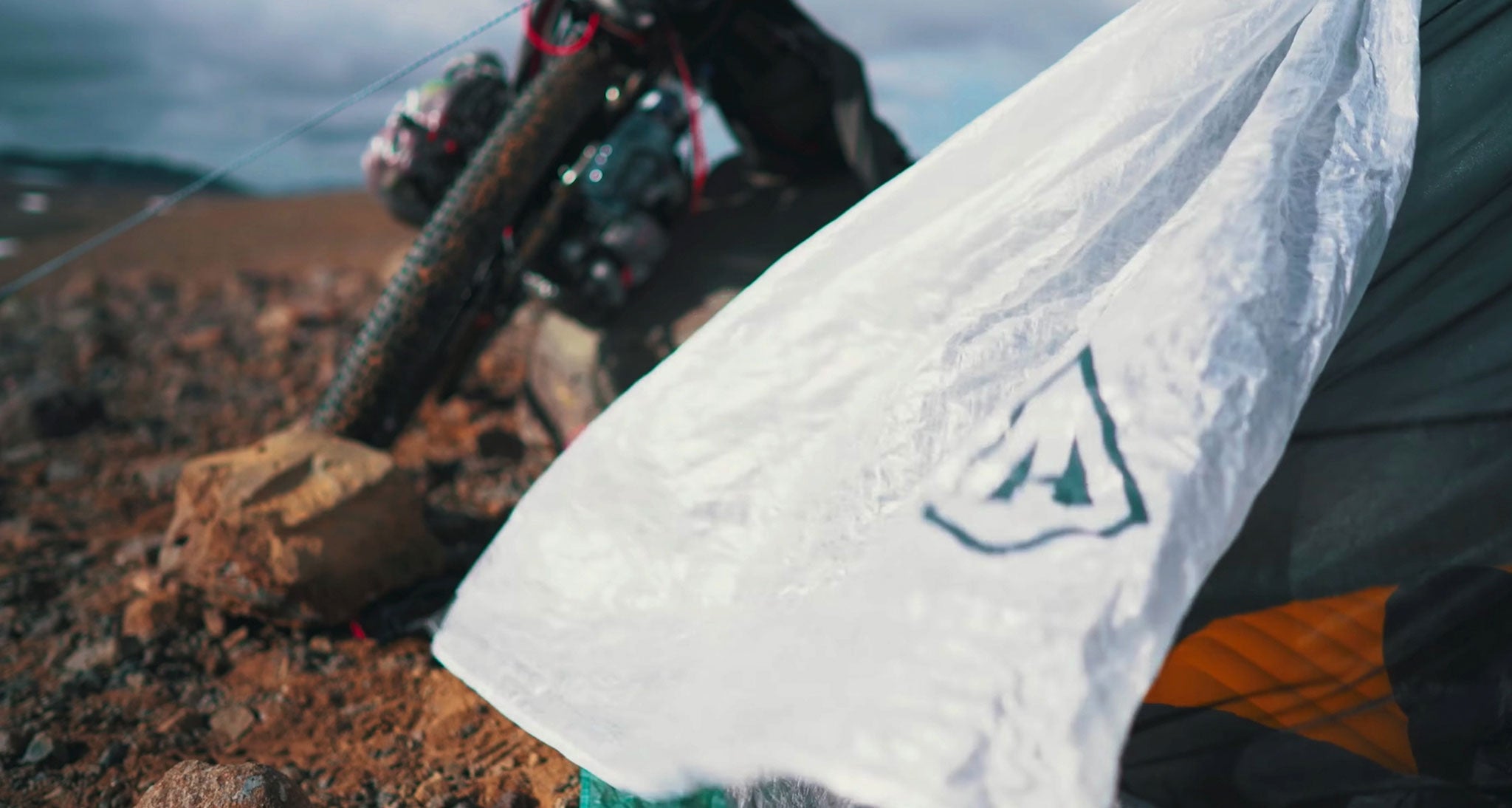What’s the Story with the REpack Freezer Bag Cook System?
Our new REpack freezer bag cook system will elevate your dining experience out on the trail.
Some might argue that the most significant side-effect of backpacking, thru-hiking, and multi-sporting is being able to eat like a pelican. But we don’t all do it as well as we could with nutrition, caloric intake, or even just the pure enjoyment of eating some food the way it is intended to be consumed – hot for starters! When your home and kitchen sit on your shoulders in vast, disconnected expanses, goals like these aren’t always easy to achieve.
What to eat, however, isn’t the only consideration for the meticulous hiker and explorer. Ponder the size and weight of pre-packaged food bags and containers, times that by the number of days you’re out or between resupply, and subsequently, how the size of your garbage bag grows. That’s a lot of wasted space.
Enter our new REpack freezer bag cook system. How many ways will it improve your life in the great outdoors, you ask?
Walk with us.

Reduce the amount of space your pre-packaged food takes up, the overall weight of the packaging, and the amount of waste that comes from it.
We’re suggesting a little extra work on the front end of your trips. And by a little, we mean a little. Simply move the contents of your dehydrated meals to re-sealable zip-top freezer bags. *This part is important.* Freezer Bags have a polypropylene additive that increases the durability of the bag, and its ability to handle extreme temperatures better than a regular storage bag. But, keep in mind that YOU DO NOT NEED WATER TO BE AT A ROLLING BOIL to properly rehydrate food. It just needs to be hot.
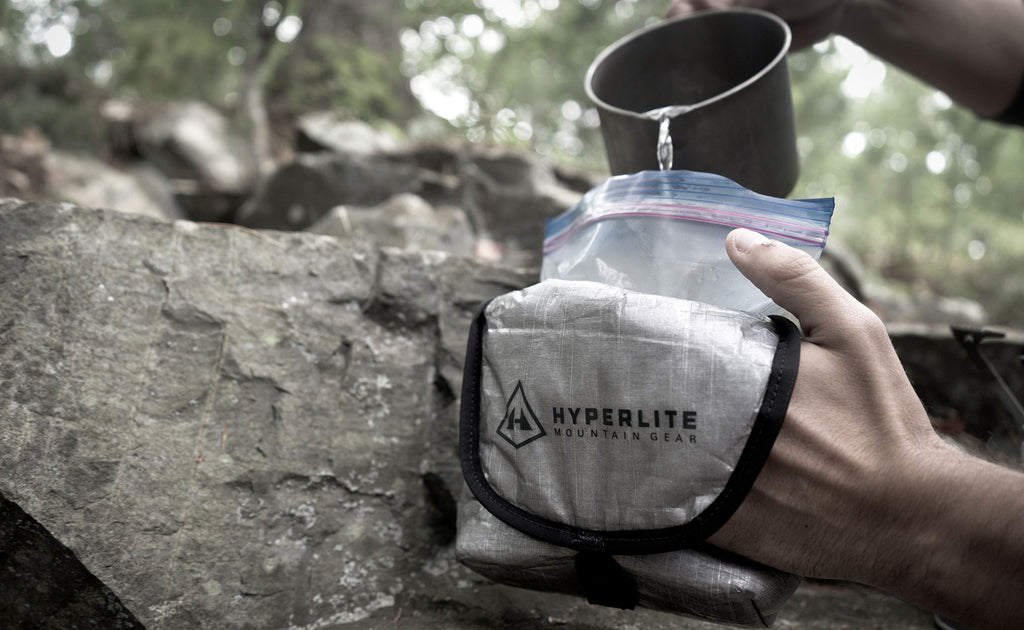
Step back and marvel at the reduction of real estate your new repackaged meals take up. Same goes for the garbage you’ll be carrying out at the end of your trip.

Your food stays hot longer while it rehydrates when you keep it in your REpack.
When you get to a lunch spot or camp for the evening, put the bagged meal in your REpack, pour in your hot water, seal it back up, close the REpack clasp, and let nature take over. Go for a swim, set up your shelter, get a fire going, etc., and come back to a still hot, ready-to-eat meal. For best dining results, we recommend a long-handle titanium spoon.

Great for traveling in groups.
Take the prepackaged food, one Jetboil or stove, split up hot water amongst the group, and pour it into everyone’s meal bags in their REpacks. Less to carry and a great way to measure down to ounces how much water will be required for the trip if resupply options are scarce.
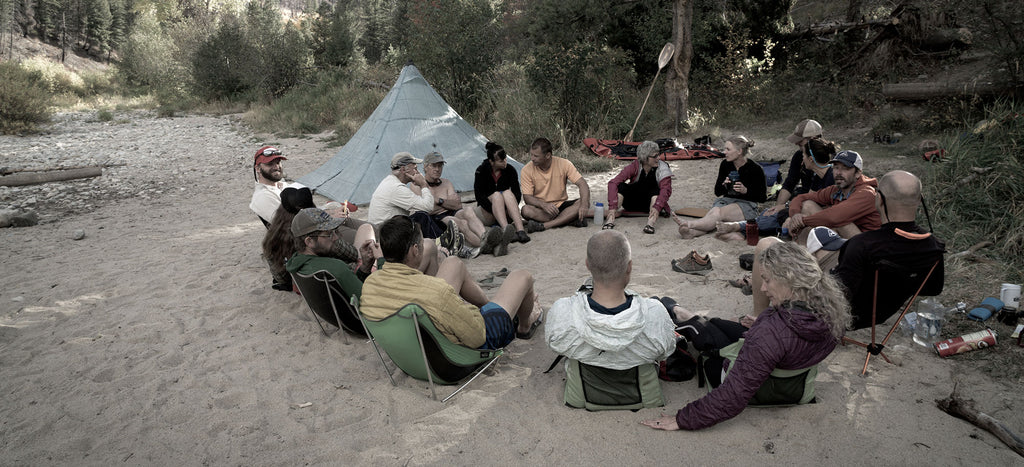
Use REpack as a case for your fuel-canister stove, spice packs, pot scraper, coffee or tea bags, dish towel, etc.
Multi-use is smart use when space is at a premium.

OTHER THINGS TO PONDER ABOUT REPACKAGING YOUR FOOD:
Before you seal up your repackaged meal, add extra bits of your preference for a boost in calories, flavor, or other modifications that better fit your dietary needs.
Powdered cheeses, pine nuts, quinoa, and other calorie or protein-rich foods can be added to the meal. On average, three dehydrated meals add up to approximately 1,500 calories – that might be okay for the first week of a thru hike, but when you’re in week two or more, your body will want and need upwards of 3,000 plus. Power-packed food equals more energy and higher mileage. Maybe you like everything spicier. Go crazy there, Trail Chef.
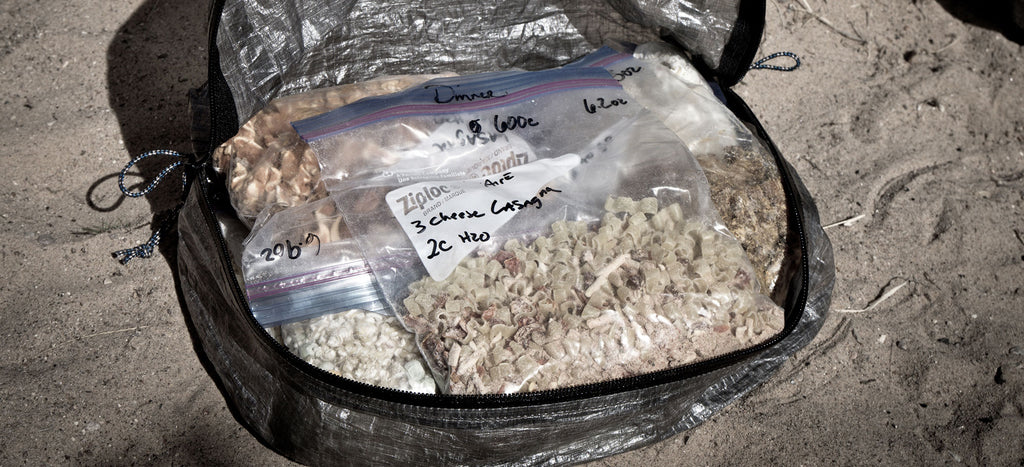
Or, make your meals yourself.
Buying dehydrated foods in bulk is less expensive, and variety is a great spice. Bulk foods also offer an opportunity to go deep in the excellent cookbook, “Ultralight Recipes for Outdoor Explorers” from Backcountry Foodie. Get more scientific about gauging the calories you’ll need to complete a trip and how to pack. And eat precisely the way you want to eat! And for some cuisine inspiration, take a look at our blog posts about Backpacking Recipes + Food Ideas, or visit some of the links below this post.
Food and the Ultralight Philosophy
Throughout our site and communications, you’ll hear us repeat that going ultralight isn’t just about buying lighter gear. It’s about looking at things through a different lens and challenging preexisting norms. At first, this methodology may seem like it results in more barriers to just getting out, but these actions on the front end are what lead to richer, and dare we say, easier to achieve life-changing experiences.
Our new REpack is another example of our focus on what really matters. Less to carry, less waste, better opportunities for the kind of nutrition that keeps you moving in top form. We believe that when it comes to putting fuel in the tank, repackaging your food and using REpack will be a game-changer and part of your process for all next times around.
Related Posts:

